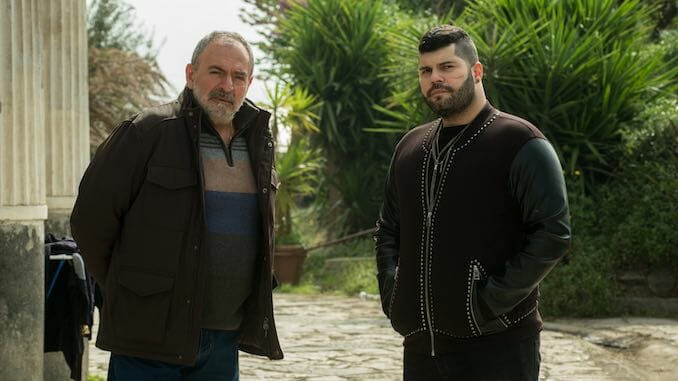With Season 4, Gomorrah Has Taken Back Its Title as the Best Crime Show on Television
Photo Courtesy of HBO Max
Spoiler Note: If you haven’t yet watched this show, whose fourth season is now on HBO Max, note that this post contains major plot spoilers for the third season of Gomorrah.
Here’s a strange conundrum: Imagine you have one of the best, most compelling characters in the history of crime TV—Ciro DiMarzio, l’Immortale—and the best thing for your show is to kill him off. Do you have the courage to do it?
If you’re Gomorrah, the Italian mafia drama whose fourth season began streaming on HBO this past week, the answer is yes. Developed by Roberto Saviano, whose 2006 nonfiction book of the same name was written after he investigated and infiltrated the Italian syndicate known as the Camorra, the show began life as a gritty, unvarnished look at life in the crime-ridden slums of Naples. It was more of a character study than the truly dire 2008 movie adapted from the book; from the start the relationship between Ciro and Gennaro Savastano drew you in, but its strength was in the keen attention to the details of the world. It had all the credibility of The Wire, but was more elegant because it allowed you to see that world, and all its complex workings, with no filter. Where The Wire had its characters explain everything to you, Gomorrah trusted that you’d pick it up.
What happened by Season 3 is something that happens to a lot of shows that find themselves with two or three really transcendent characters; they begin to suffer under the weight of them. The story of Genny (weak son of a mafia boss who develops into a brutal mastermind) and his friend Ciro (brilliant but low-born climber with the ruthlessness and luck needed to thrive in that dark world) was so good that it began to burden the narrative. And what happens when you expose your main characters to incredible danger over and over, but there’s a sense in the back of the viewer’s mind that they can’t die? Well, as I’ve written before, it’s the same thing that happens to a show like Sons of Anarchy or Breaking Bad—you ratchet up the stakes desperately, but it begins to ring hollow because there’s no real sense of consequence.
Season 3 of Gomorrah was still entertaining, but the dizzying quality of the story suffered as it descended into hyperactive plot swerves, rather than unfolding organically as a natural byproduct of their specific criminal landscape. As I wrote at the time, “I think there’s no escaping it… and at times the bleak realism that is the essential harmony to the plot’s melody falters in the face of careening plot twists that exist for their own sake.”
Well, there was one way to escape it: You kill Ciro, or you kill Genny.
-

-

-

-

-

-

-

-

-

-

-

-

-

-

-

-

-

-

-

-

-

-

-

-

-

-

-

-

-

-

-

-

-

-

-

-

-

-

-

-








































